Meaning comes in Many Forms, some of them catchier than others...
| Teen Top is not a band known for their incredible story-telling or deep-seeded philosophizing or even for good music at all really. If we are to speak realistically, Teen Top is known by everyone, including their more honest Angels, as a group fabulously funny, super sweet boys with tight, intricate choreography, massive issues with role-distribution & MR, interesting hair, and a high-energy synthy sound that plays into lyrics that don't really make sense but are super catchy anyway... |
| If you haven't seen the video yet, FOR SHAME. Watch it now. Look I won't even make you go to the youtube page, I'll put it right here for your convenience. -> [source: TeenzOnTop Official Youtube] Watch it all the way through; ignore the strangeness for now, it will be explained. | In terms of looking at kpop from a scholarly point of view, there are several things that make this particular video daunting in a way that some other videos have managed to escape. First and foremost is the band's name: Teen Top. It's a stupid name, not least because there's only one teenager left in the group (by American reckoning) and that will cease to be true in November (by Korean age-reckoning). Secondly, the hair, well the styling in general really. It's very bright and colorful and brimming with flashy non-sense that make most scholars and even most 'serious music fans' look down their noses with pre-determined judgement. And finally (of the three most prominently displayed issues), the song only has like ten lines in it, most of them are repetitions of the moderately nonsensical & certainly less-than-obviously-profound phrase "장난 아니에요" which seems to best translate to "it's no joke" ... |
| Starting with the visuals as we are presented with them, the MV actually kicks off on a pretty serious tone. The de-saturated colors of the car veering violently and the rather intense fight-scene between L.Joe & ChangJo, the blood splatter arrival of the title; none of it links to the prominently circulated colors of their hair, nor their brightly trendy fashions. All of it scream high tension, dissociation, and angst. The slide into the bright colors is elegantly done as the car drives under a bridge and the screen is briefly black and then bright in the wide space of the cathedral set, with the boys as small colorful footnotes in the largely grey space (mimicking the de-saturated outdoors). The visuals are also tied together by the echoing sounds of the story-intro bleeding into the musical intro. The sudden vamp of the song's actual intro matches the visual as the camera moves in on them, and the pitch & tension of the song's vamp rises as the the boys rise from the floor and the voices rise in number. It's a fantastic few seconds, and it introduces the main visual concept: Mirrors. |
(typically most easily spotted by the arrangement of hair colors, and of the colors of tops & pants).
| Even the fight-scenes are set up inside of a mirror concept. This half-second-snippet actually has three lines, one running down the middle reflecting the lighter hair against the darker hair, as well as the state of sleevelessness, another running diagonally from Chunji to ChangJo inversely reflecting the colorfulness and style of haircut as well as the greyness of the shirts (including how at the top of the image Chunji's in white like the top of the gradient on Niel's shirt, and Ljoe in grey is at the bottom), and a third directly above CAP & Niel's heads, reflecting on both sides the size of attacker vs the attackee, and the hand doing the grabbing. Being that this scene lasts for less than five seconds in the entire video, I'd say going to such efforts is quite admirable and proof that it didn't just 'end up' that way for retrospective analysis. | Now, the thing to keep in mind is that music videos are dynamic platforms: they are not designed to be viewed one frame at a time, rather they are meant to be witnessed as a progression in real-time at a minimum of 32 frames per second. The movement gives the MV it's real magic. Aside from all of the straight still-visuals of the reflective lines, the mirror concept is built into the choreography on a level that surpasses just about any other conceptual choreographic design I've ever seen. Take a look at the dance version MV on the left to see what I mean, watch how the hair-colors line up, the way the gold vs black aspects of the costumes are set against each other, and even the simple physical movements of each member. |
| Lyrically, Rocking seems to be about as deep as a plastic kiddie pool, at least at first glance. Now this section might have some retrospective insight adding to the perception of meaning, more so than the other aspects of the video, the lyrics take leaps of comprehension that I might just be making because I'm an English major and can impose meaning on anything. However, that is more of a standard disclaimer than an actual word of caution. I am very good at my job. The Intro and the very first vamp play off the Mirror concept again, working with inverses reflecting inside the lines and the syllabic form reflecting between each couplet. 'TEEN TOP we gon' ' is a set of non-alliterative syllables, which matches up with the set starting off the next line: 'hey don't stop it'. A line between the center of the alliteration puts 'top' and 'drop' parallel reflecting up and down, and further out it puts 'pop' and 'rock' together as inverses (which links to the false, but common cultural notion that pop music and rock music are total opposites). Enough with the mirrors, we get they've got a mirror concept, move on. Ah, but do you get why they have this ridiculously over-obvious mirroring thrown about? There are several reasons, the first among them being exigency (which is a fancy word for 'why it matters outside of the context it was taken from, ie the story'). It's the idea that music mirrors real life and that life is messy and confusing, and also frequently ironic, like the lyrics. The chorus, while it repeats the same line over and over again, the line is vague enough to have multiple meanings: 'it [being the breakup] is real this time' 'it [being the relationship] is a serious one', or even '[the outside influence of people pushing them together] is ridiculous, not kidding'. It may also, of course be It's ironic in many ways, since by such frequent repetition of "it's no joke" it has in fact been made into a joke, or at least something of little consequence. Now referring back to the ambiguous 'it' here, we could be talking about the fight being a joke, or the relationship as a whole, or the ridiculous intrusion of outsiders, or a combination of several meanings some of them jokes, some of them honestly not jokes, and the situation as a whole as being reduced to utter absurdity. The song seems to say that all of the outcomes are plausible, but since the last sung (new information) lyric is "I Miss You" and then the song is broken by CAP's speech (distinctly not rap) of "Hey, where are you" the most logical conclusion is that they do in fact get back together at the end. However, since it does drop back into a last repetition of the chorus, it would seem that the cycle is not broken and they're sure to break up again. The song doesn't seem to vehemently condemn or condone this sort of at-each-other's-throats sort of relationship, but it does give the female protagonist a strong and vibrant personality, saying that in their fights "She was so good / Not losing a single word to me" and that "I fell for that charm" in particular, so it would seem to lean towards the approving side, especially as in the video the boys, CAP most of all, are laughing the heads off through the whole thing without breaking character. But how can they be happy? They're fighting! And what about the boys fighting each other? Happiness is a flexible state of mind, they could be laughing at the joke that is the idea that the break-up is really happening, or even just at the ridiculous situation as a whole. The fight scene has several renderings, depending on how you choose to look at the meaning of the lyrics: That Changjo & Ljoe are fighting over the same girl is an option, or you could (as I am choosing to) see it as the idea that Changjo and Ljoe are two-sides of the same person, in the midst of fighting himself: ChangJo is their bad days an Ljoe is their good days together. This seems to be the more videographically acceptable option as it would explain why all of Ljoe's scenes with the girl are foggy with light-blur: it's a memory of a time before the immediate narrative action of the song that is playing out in the video. It also explains why Ljoe holds on to the girl as she walks away from him, but ChangJo never seems to really have her at all; on good days he never wants to lose her and hates to see her go, and on bad days he's too busy being angsty to see that she never actually went anywhere. The fight on the beach is the narrator fighting himself (a metaphorical changing of tides in a literal area of tidal change), seeing as all of Teen Top comprises a singular narrator and they are fighting with themselves rather than against any established outside force. The bridge with the flashlights on the darkened cathedral set support this as well, being that the set is an allusion to the spiritual internal, and the boys are lost and confused inside its dark passages, while still being passionate as ever, they're angry and upset about being in the dark, particularly inside of their own heads. The flashlights indicate that they do have some insights as to what's hiding in the dark, but that their ability to see and understand is limited. | Translated Lyrics{TEEN TOP we gon' rock it drop it top it Hey don’t stop it pop it} (x4) It’s no joke, it’s no joke, it’s no joke We are really no joke It’s no joke, it’s no joke, it’s no joke {We are really no joke} (x3) I’m miserable, I broke up with her today This time, it feels somewhat different She was so good, Not losing a single word to me I fell for that charm And only I am this miserable I’m sick of fighting now, Everyone around me tells me That I’m gonna end up dating her again (I’m not joking) You and I, we’re crazy, We’re gonna see each other tomorrow anyway So why are you doing this? It’s no joke, it’s no joke, it’s no joke We are really no joke It’s no joke, it’s no joke, it’s no joke {We are really no joke} (x3) {DJ, but two} (x3) We got not one {Hand’s up in the sky we came to get down} (x4) Every single day, we hate on each other It seems like we can’t live If we don’t attack each other Whose fault is it that we’re this way? We easily say that we’re No better than strangers with a growl But soon. we’ll probably call each other, Saying “I miss you” (Hey, where are you?) It’s no joke, it’s no joke, it’s no joke We are really no joke It’s no joke, it’s no joke, it’s no joke {We are really no joke} (x3) {TEEN TOP we gon' rock it drop it top it Hey don’t stop it pop it} (x4) {Lalalala lalalala} (x3) Lalalala We are really no joke. |
| | All in all, this music video tells an incredibly rich story with a refreshingly internal narrative. The story does evolve and progress throughout the piece, even as it manages to firmly establish that it's inside of an unbroken cycle. And to make it all even more incredible is the fact that it's put to such a kickin' track. The changes in dynamic and tension, the use of the various voices to fill and spatialize, the way such blatant lyrical repetition can be mirrored and then altered inside the musical backdrop the lyrics are put to . . . all of it is incredibly fabulous. Also, the boys are GORGEOUS, the styling really plays well with all of their features, not to mention that they just look so happy, they get to have a fully serious storyline and also get to goof off and have genuine fun; in my book that is the absolute best combination you could ever hope for. |
| Also, in following these promotions, I've come to fully realize how delightful a fanbase the Angels are, I mean just listen to them during Lives (an example of which I have provided on the right)! They're perfectly silent during the important parts, screaming support during the open parts, and the fan-chants are top of the line. | |
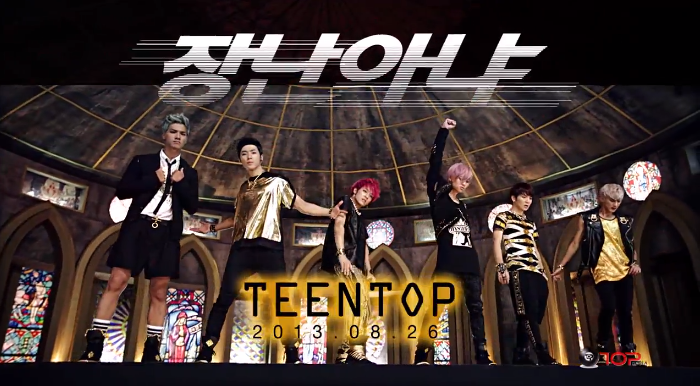



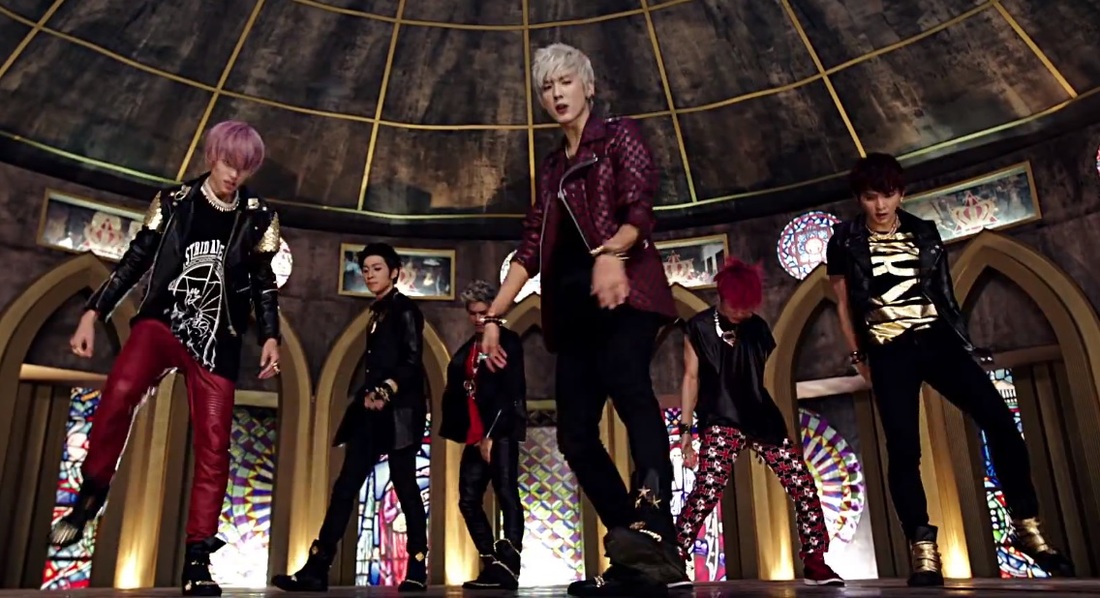







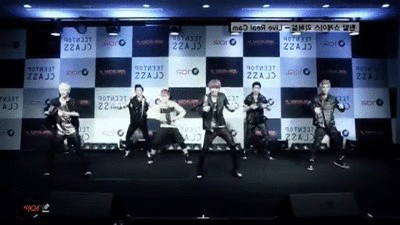

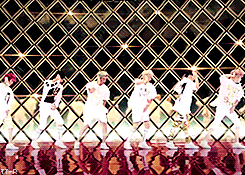
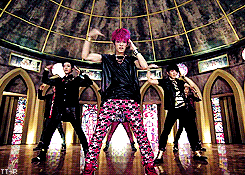
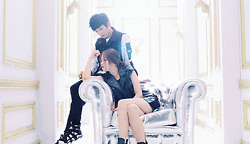
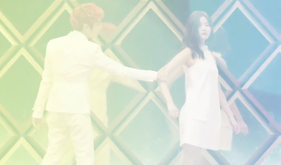


 RSS Feed
RSS Feed
